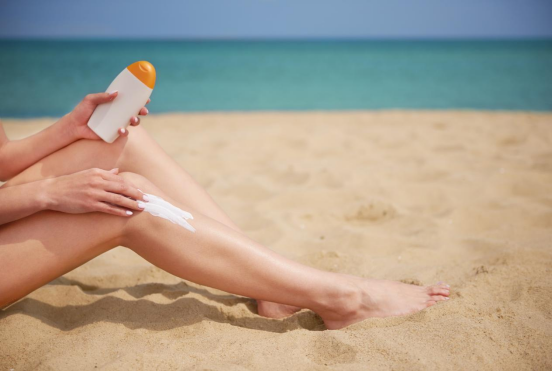
As customers come to be significantly savvy regarding skin care, the argument between chemical and physical sun blocks remains to be a hot topic. While both offer crucial defense versus the sun's dangerous ultraviolet (UV) rays, physical sun blocks are frequently lauded for their gentle yet efficient solution, making them a recommended choice for those with sensitive or reactive skin. The trick to their success depends on their active components, which produce a physical obstacle on the skin to shut out UV radiation. This write-up will certainly look into the globe of physical sun blocks, concentrating on their key ingredients: zinc oxide and titanium dioxide.
Unlike their chemical counterparts, which absorb UV radiation and convert it into heat, physical sunscreens work by sitting on top of the skin to create a guard that disperses and spreads both UVA and UVB rays. This device is why they are usually described as "sunscreens." The key benefit of this approach is its prompt efficiency upon application and the lower probability of triggering skin inflammation, as the active ingredients are not taken in into the skin.
One of the most celebrated active ingredient in the physical sun block family is Zinc Oxide. This powerhouse mineral is special in its capability to offer broad-spectrum protection, meaning it effectively secures the skin versus the full spectrum of UVA and UVB rays. UVA rays are responsible for early aging, consisting of wrinkles and fine lines, while UVB rays are the key root cause of sunburn. By providing comprehensive defense versus both, zinc oxide plays an important role in avoiding sunlight damage and decreasing the threat of skin cancer cells.
Additionally, zinc oxide is renowned for its relaxing residential or commercial properties. It has been utilized for centuries to treat small skin inflammations, breakouts, and burns, a testimony to its gentle nature. This makes sun blocks formulated with zinc oxide an ideal option for individuals with delicate skin, acne-prone skin, or conditions like rosacea and dermatitis. Its non-comedogenic homes also indicate it is less most likely to clog pores, a typical concern for those with oily or mix skin.
The other key player in the physical sun block category is Titanium Dioxide. This normally occurring mineral is one more excellent component for creating a physical barrier versus UV rays. It is highly efficient at mirroring and scattering UVB radiation, giving robust security versus sunburn. While it offers great defense across the UVB range, it is usually considered much less reliable against long-wave UVA rays compared to zinc oxide.
Consequently, titanium dioxide is typically made use of along with zinc oxide physical sunscreen ingredients in sun block solutions. This combination creates a synergistic result, boosting the overall broad-spectrum security of the product. By leveraging the toughness of both components, formulators can produce a sun block that supplies thorough and dependable protection versus the sun's harmful rays. Like zinc oxide, titanium dioxide is likewise mild on the skin and is an ideal alternative for those with delicate or easily irritated skin.
In recent times, innovations in formulation technology have dealt with one of the preliminary disadvantages of physical sunscreens: the thick, white cast they would usually leave on the skin. Modern formulas currently utilize micronized or nano-sized bits of zinc oxide and titanium dioxide, which enables a more cosmetically stylish application without jeopardizing their protective capabilities. This means you can enjoy the gentle, reliable defense of a physical sun block without the tell-tale white residue.
In conclusion, physical sun blocks supply a trusted and mild method to safeguard your skin from the sun. Their star ingredients, zinc oxide and titanium dioxide, operate in consistency to produce a physical shield that deflects unsafe UVA and UVB rays. With their superb safety and security profile and suitability for all skin kinds, particularly sensitive skin, physical sunscreens are an awesome force in the fight against sunlight damage. The next time you are Surf the sunscreen aisle, consider the effective, safety, and skin-loving benefits of a physical solution.